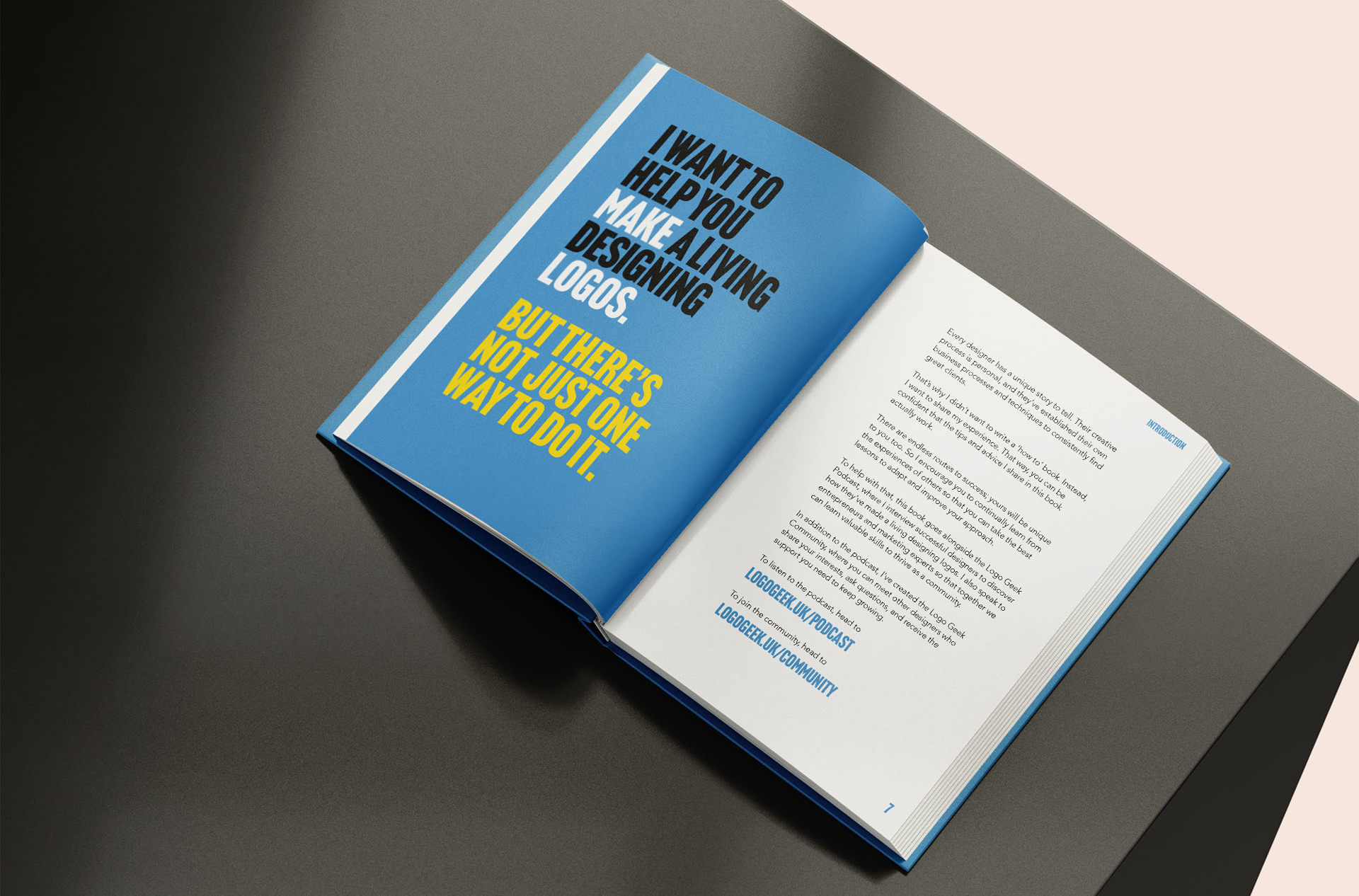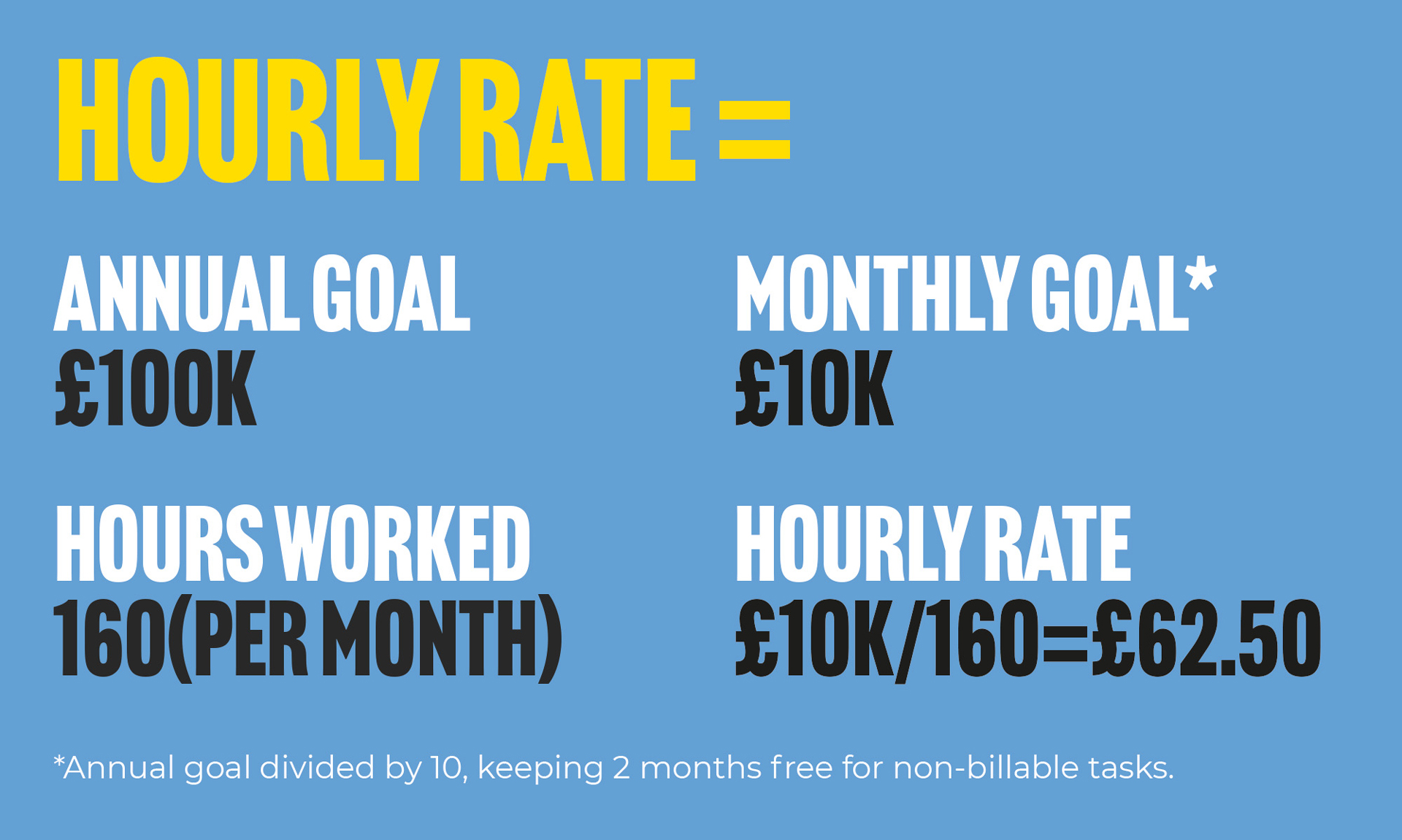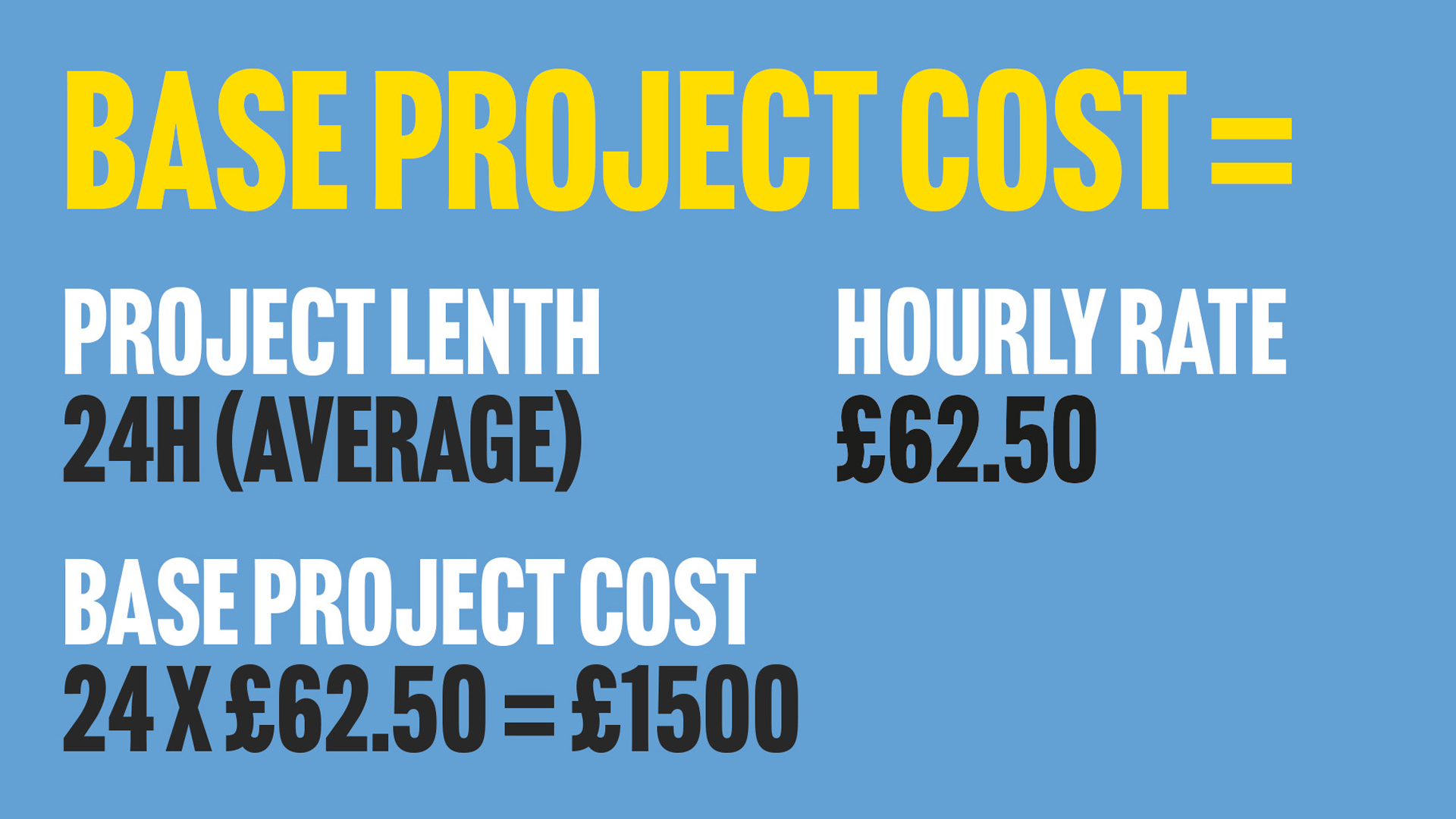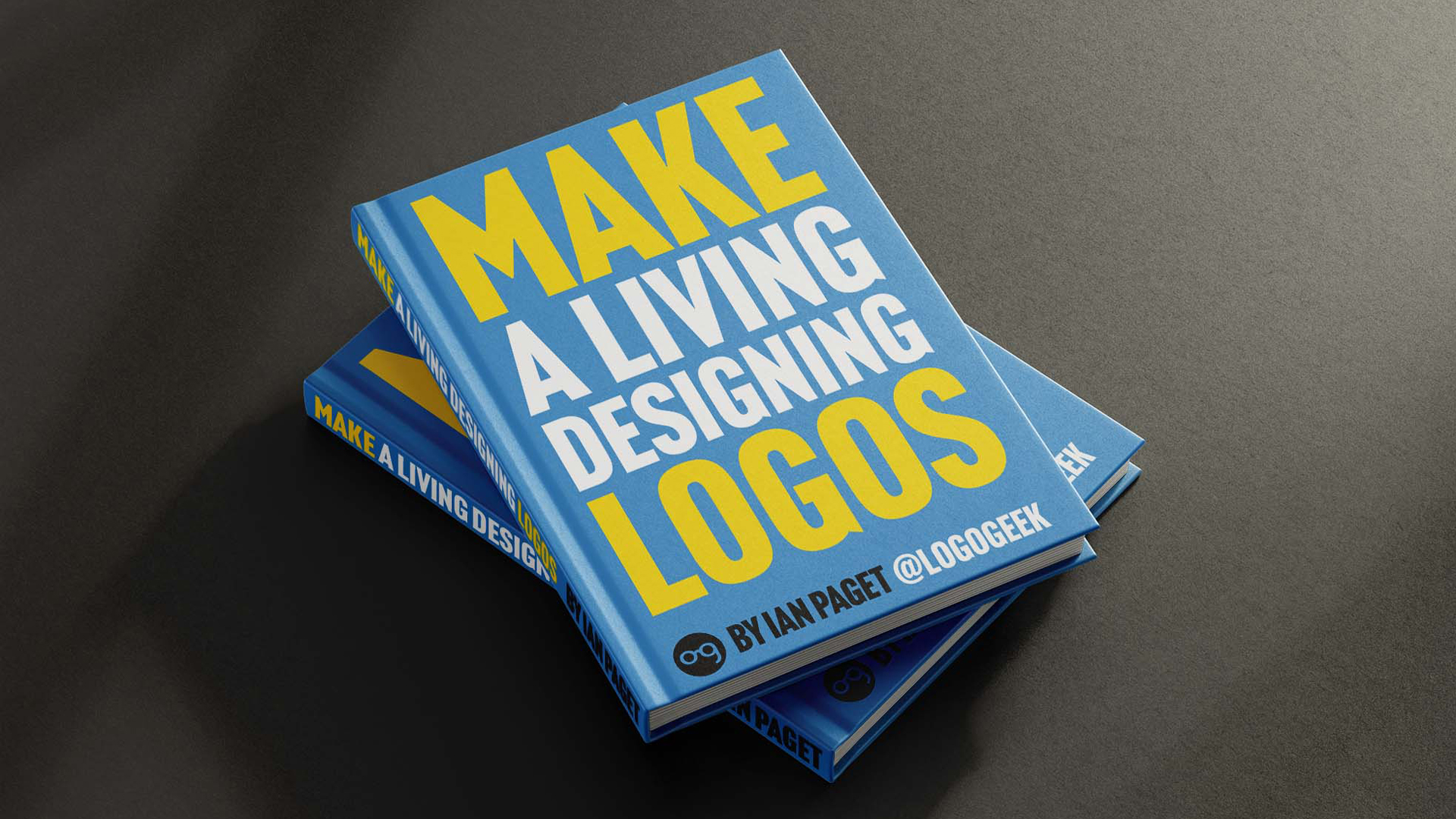
When you first start designing logos, as you’re still learning and don’t have much experience, you’ll unlikely get paid much.
But we all need to start somewhere. Look at every opportunity as an investment in your future. Opportunities are more valuable than money initially, so be thankful if you can get even a few. You can then gradually increase your prices as you learn how to design better logos.
Only when you have a strong body of work and can demonstrate that you’re the best person for the job will you get paid what you truly deserve. But how much should you charge once you do have the experience?

If you look at the market for logo design, the prices vary considerably. They start as low as a few dollars and go up into the millions. However, knowing exactly how much YOU should charge is not a simple question. Everyone’s process, experience and location will differ considerably, affecting the price.
There’s no single right way to do it. For example, you might choose to work on a handful of projects at a high price. Or you might churn out several a week at a lower price. How you position yourself in the market is up to you.
There are also different ways to price things. I’ve met designers who charge a fixed price for every project, and I’ve met those who work out an individual price for each client based on the value to the company.
There are many ways to do this, and I don’t have all the answers. But I can share how I do it and what’s worked well for me so far.
Position yourself in the market

I’ve positioned myself in the mid-range market and aim to take on 1–2 projects per week, which allows me to live comfortably. As the average time I spend on a project is fairly consistent, I’ve kept everything simple for myself by charging a fixed price.
I will, however, quote a higher price for larger companies where I know there will be more decision-makers involved and where I want to invest more time, or if it’s a simple project or one that I really want, if needed, I’ll reduce my price.
Supply and demand will affect my prices too. I’ll quote higher if I’m super busy, as I have nothing to lose and want to reduce the demand. If I’m a bit quiet, I might lower my price to close a sale if it’s needed. There’s nothing wrong with lowing your price if you remain profitable.
So let me explain how I work out that fixed cost.
I start by working out a base price. This is the minimum I can charge in order to earn enough to cover my living costs. By working this out, I can always charge higher but also reduce my price where needed. As long as it’s no lower than my base price, I can be comfortable knowing that I can still afford to live.
This is based on the average length of time I spend on a project. Although I don’t charge by the hour, knowing how long I usually spend on a project means I can work out a suitable average project price.
Once I know the average time I spend on a project, I can multiply that by my hourly rate. But I’m sure you’re wondering how I work out my hourly rate. Let’s discuss.
Working out my hourly rate

I start by determining how much I want to earn in a year. This can be as high as you want – just be realistic.
It can be helpful to determine your living costs, including your mortgage or rent, bills, travel, food, entertainment, etc. You’ll want to earn a little more to save up too, but knowing how much life costs will give you an idea of how much you need to make each month to live comfortably. For example, let’s say this is £100k per year. (A nice round number!)
Whatever figure you’ve worked out, divide that by 10 to give yourself a monthly goal. I divide by 10 because I’m subtracting a month for time off and a month for non-billable tasks such as networking, marketing, calls, emails and other administrative tasks. So, for example, £100k divided by 10 is £10k.
Next, I determine how many hours I can realistically work per week. Typically this is 40 hours (8 hours a day, 5 days a week). I then multiply this by 4 to work out how many hours I’ll be working each month. So 40 hours multiplied by 4 means I’ll be working 160 hours monthly.
To get my hourly rate, I divide my monthly goal by how many hours I’ll work each month. So if my monthly goal is £10k and I divide that by 160 hours, my hourly rate works out at £62.50.
Working out my base project cost

To determine my base price, I work out how long a project usually takes, including any revisions. I then multiply that by my hourly rate.
If I spend around 3 days on a project (8 hours a day), the time I spend per project is 24 hours. So 24 multiplied by £62.50 equals £1,500. So if I want to earn an annual salary of £100k, the minimum I need to charge per project is £1,500.
Now I know a base price, I can work out a fixed project cost. I want to make a profit, so in this example, I’ll increase this a little to around £1,800.
So it’s clear, this is not what I charge, but I hope it will help you determine what YOU should charge based on your circumstances.
Charge per project, not per hour

Do bear in mind that this approach is only a starting point. As you get more experienced, you’ll inevitably work faster. So the idea of working out a price based on your hourly rate will eventually make no sense. By that logic, the more efficient you become, the lower your prices will be.
But ideally, you want to increase your prices as you get more experienced. That’s why having a project price is helpful. It’s a fixed figure that you can continually increase, regardless of how long you spend on the project.
There’s no ceiling to what you charge as long as you can find clients who will pay those prices.
Understand your position in the market

Once you’ve established a reputation, you’ll hopefully attract clients who will only want to work with you. In that case, you can almost name your price. But in most cases, clients will shop around, so it’s helpful to understand what the market looks like. Not so you can be the cheapest, but so you know how you compare with others in the industry, particularly at the price point you wish to target.
The market constantly changes, so I can’t give you all the answers here. Discover what’s out there on your own, as if you were a client. That information will become invaluable for you.
The below is an extract from the book Make a Living Designing Logos by Ian Paget, which is currently available to back on Kickstarter.







